

Introduction ('Home')
Thermal Imaging Photographs
Woodpile and Ash Pits
Covering the Pot Furnace
Photographs of Pots
Photographs of Glass Waste
Photographs of Glass Vessels
We had five pots made and fired for the 2005 project: three larger and two smaller. These we covered with a one-inch thick layer of daub. This was to try to reproduce the fired clay seen on the walls of many pots found at late Roman glassworking sites. We thought that the reason might have been to add to their durability and to help to prevent leaks. Following the firing, this appeared not to be the case as we had two pots crack and lose their glass. The reason appeared to be hairline cracks that were already present before the pots were re-heated in the furnace over two days.
A recent (2016) idea is that the outer layer of clay or daub has the effect of providing insulation from direct contact with the furnace flames and waste gases, lessening the possibility of cracking due to thermal shock (personal communication from Frank Wiesenberg).
The used pots have been laid around the manhole cover in the order in which they were in the furnace, with the areas of the pots which were facing the gathering holes pointing outwards. These can be seen as a browny-yellow colour caused by deposits from the exiting waste gases.
The grey glaze of the daub contrasts with the green glaze of the pot rims. These colours are caused by the iron in the clay forming part of the potash-rich glaze. Compare these photos with the 2006 Pot Photographs.
The white layer at the bottom of two of the pots is high purity silica sand, added in an attempt to stop the leaks. The idea was for the extra sand to combine with the glass in the pot to produce a high viscosity glass which would not flow. It did not work!

|

|
|
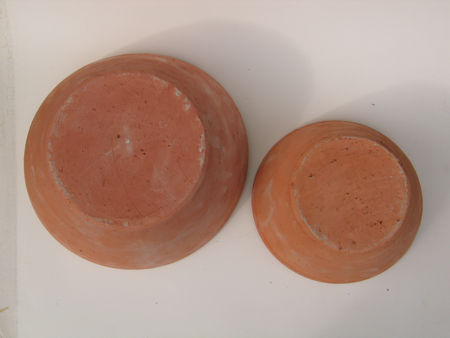
|

|
|

|

|
|

|

|
|

|

|
|

|

|
|
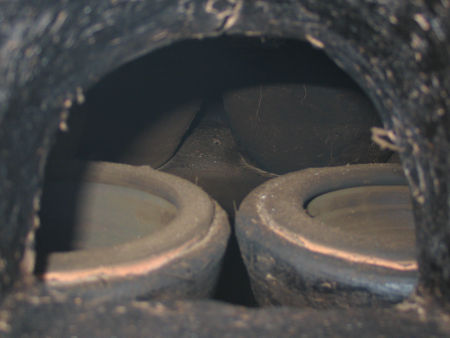
|

|
|

|

|
|
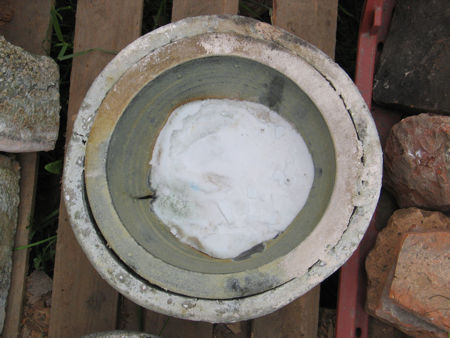
|

|
|

|
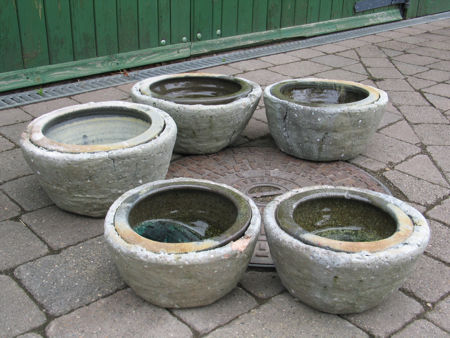
|
|
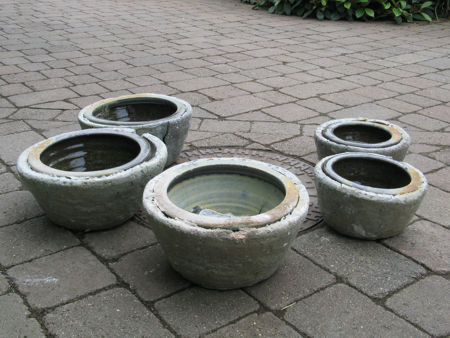
|
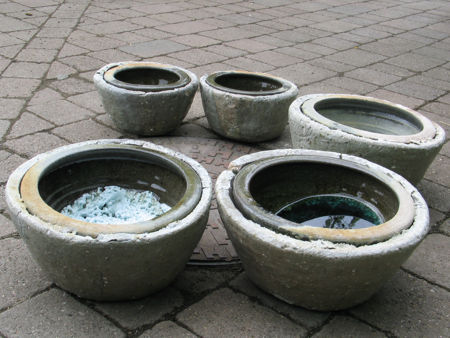
|
|

|

|
|

|

|
|

|

|
"If you build it, they will come."